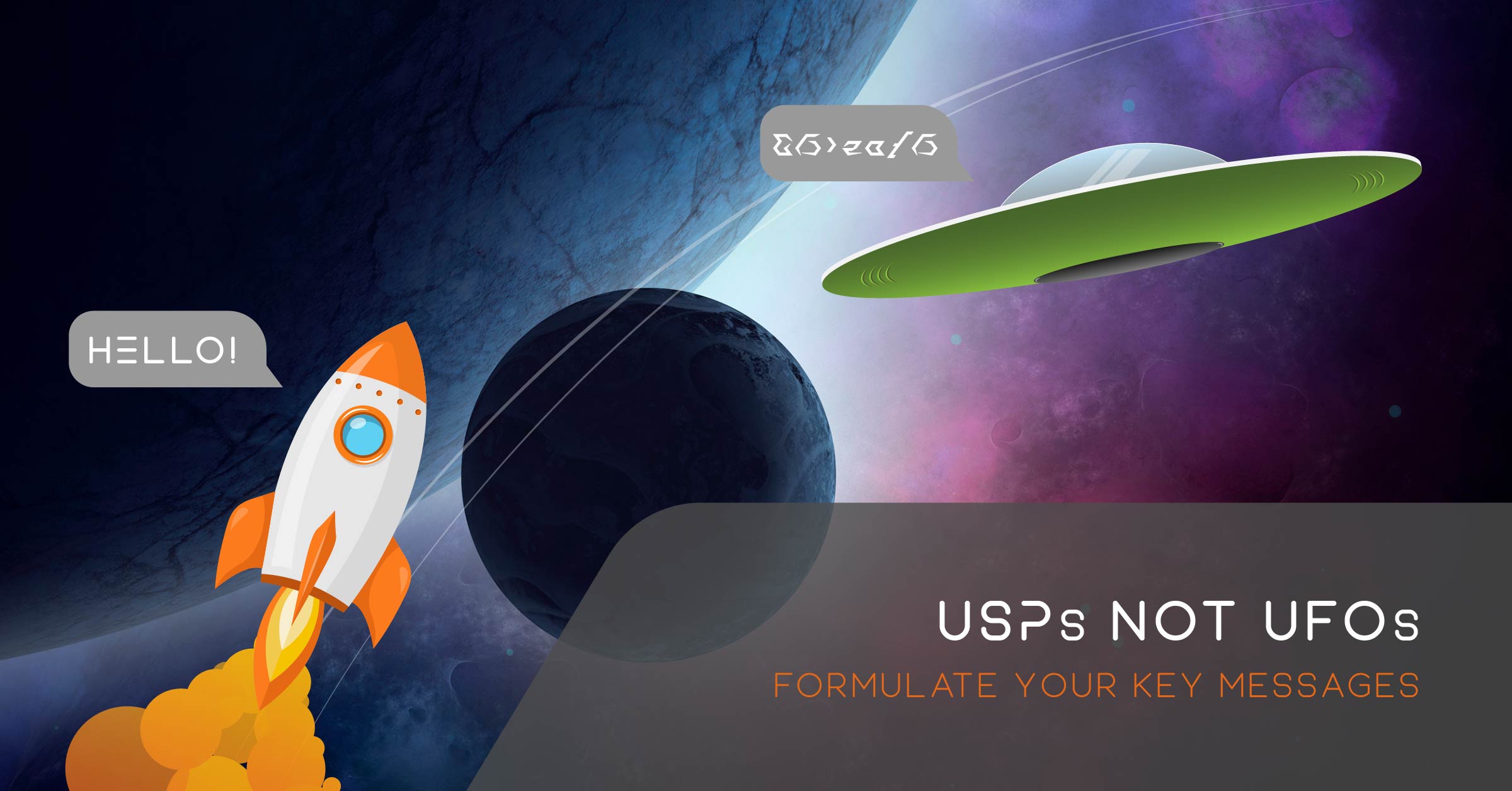Unless your USP is obvious, you have some work to do. The good news is that once you’ve identified the hidden gem that makes you stand out as a business, your marketing messages and overall strategy will have greater clarity and, most importantly, relevance for your prospects and customers.
What is a USP?
A USP is your unique selling point. It is something that differentiates you from your competition. It is particularly important to try and identify your USP if you have a very similar product or service offering to your competitors. If you can’t identify and easily communicate what makes you different, it will be challenging for your marketing team to target customers, position your business and tailor their communications. Ultimately, making it more difficult for your sales team to convince customers to buy from you rather than the competition.
With a well communicated USP using consistent marketing messages your target audience will instantly recognise and easily remember your business, enabling you to build your brand.
Your brand’s USP doesn’t have to be what you sell, it could be the way you produce it, your pricing structure, where you sell your product or service, how you communicate its features and benefits, your company culture or even how your business came to exist. Something that sets you apart from the competition that makes sense to your customers and can be easily understood and communicated by your employees.
The discovery process
To be in with the best chance of making your product or service a “must have” for customers, you need to believe in it yourself. To do this, you need to understand what’s special about it and why it is relevant and important from your customers’ perspective (not your own).
Don’t just think about customer need, it is important, but buying decisions are based on more than just need. They’re based on emotion too – how is that new product or service going to make your customer feel? Is it going to solve a problem that makes them feel calmer, less frustrated and more in control? Is it going to save time or money to enable them to progress other projects that motivate them more?
Over time, it’s worth your sales team asking prospects as a matter of course why they came to you and what tipped the balance for customers who have signed up to your product or service. This breeds a positive culture of discovery in your business that helps you gain valuable insight into customer behaviour and decision making that will give you a competitive edge.
Once you know why customers might buy your product and service, you need to test what you’ll be up against. If you’re a new business, or are launching a new project to a different target audience and therefore don’t have existing customers to ask, it might be time to do some mystery shopping. Finding out the strengths and weaknesses of your competitors is vital so that you can rate your business’ product or service features and customer benefits against them. This is where you may be able to identify clear ways of differentiating what you offer.
Your mission – 3 steps to identifying your USP
1. Get insight from customers:
- Know who your customer is – demographics and mindset
- Understand what they want and why – what is their motive and intent?
- what problems to they have?
- what is it they need?
- how do they want to feel?
- what will make them feel special?
- what is a deal breaker to them becoming a customer?
- Know why customers buy from you and not your competitors
- Find out from existing customers what you are doing well and what competitors might be doing better than you. Are you solving their pain?
- Ask your sales team what customer insight they’re picking up during the sales process
2. Do your competitor research
- Identify your 3-4 closest competitors
- Compare your product, service and business features and benefits – are there any gaps where you can position yourself differently?
- Complete a SWOT (strengths, weaknesses, opportunities and threats) analysis to make sure you’ve not missed anything. The opportunities and threats help you consider the future not just the here and now.
Once you’ve refined your USP and tested it to make sure it resonates with your audiences and clearly relates to your business, you can develop consistent marketing messages that can be used across all the channels you use to communicate with customers. That might be via email, on your website, across your social media channels and in your sales materials and presentations.
Down to earth messaging
Once you’ve identified your USP it’s time to communicate it.
Your customer messaging is really important and there are a couple of things to consider:
- Clarity – be clear and concise in how you communicate your USP and the language you use, make sure you highlight how you can solve a problem
- Factual – make sure you can back up your USP claims – what proof points and evidence do you have that it can and will alleviate your customer’s pain? Include it in your messaging.
To develop your messaging think about the types of benefits you’d like to promote that your USP enables you to deliver. Will it work with supplementary messages promoting different aspects of your business for example your technology, your people and your environmental efforts. Then prove it and use simple, easy to understand, down to earth language that will resonate with your audiences – employees, customers and suppliers.
Test your messaging with your audiences (it’s particularly important to get your sales team on board):
- Is it unique? Double check against your competitors’ customer messaging.
- Does it give a customer benefit?
- Can it be communicated without having to use a paragraph explaining it or putting it into context?
- Does it get the desired response?
- Is it understood, quickly and easily?
- Does your audience instantly recognise the connection with your business?
Standing on the shoulder of giants
Thinking about some well-known advertising campaigns will help bring this to life. Some that might spring to mind from the annals of history are:
- the Solvite advertising campaign of the 1970’s with the decorator pasted to a billboard and the strapline “The only one you’ll need” and other key messages of “all-purpose”, “no trouble at all” and “sticking power of Solvite” This was for wallpaper paste but as mentioned above in terms of giving the brand an identity and opportunity to expand the marketing message it went on to spawn a wider campaign of advertising for the entire decorating range of sealants and fillers and other household adhesives.
- Ronseal’s “It does exactly what it says on the tin” is a clever message which is communicating that all of the information the customer needs has been provided whilst also instilling trust in Ronseal – nothing has been hidden.
- Del Monte’s “Man from Del Monte”. The USP here is the message around quality and freshness, the fact that the fruit is picked and packed the same day. Not only that, but the Man from Del Monte knows the exact point at which it should be picked – when it’s at optimum ripeness. This is communicating the expertise that the business has.
Your customers and prospects will have suppliers they already know and trust, and they’ll be constantly receiving information from other businesses who want them to buy from them. To get cut through and be memorable, so that when they are ready to buy you are one of the businesses they might consider trying, you need to help them instantly recognise and categorise the type of business you are and why you are best suited to them.
Key steps:
- Know your audience and understand their needs, pains and motivations
- Research your competitors – find out how they differ, what they do well and where you already are, or can be, better
- Identify USPs that helps solve your customer pain points
- Develop your marketing messages
- Test your USPs and messaging with your audiences
- Keep up to date on industry trends and competitors to ensure your USPs remain valid and unique to protect your market positioning
The purpose of identifying your USP is not just so you have a punchy strapline for your next project launch, it’s more fundamental than that, it should drive your business and marketing strategy. It’s about how you position your business and your products and services to your audiences. It gives your employees purpose and your sales team something to hang their hat on when talking to customers – a real competitive advantage.
If you'd like to discuss further, please contact one of our team of experts.



